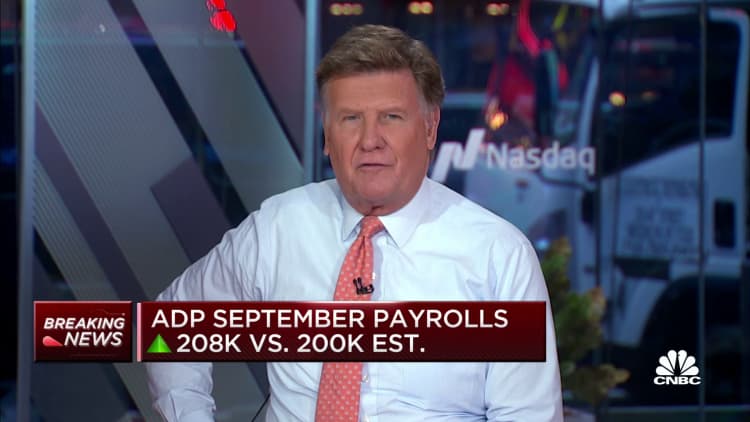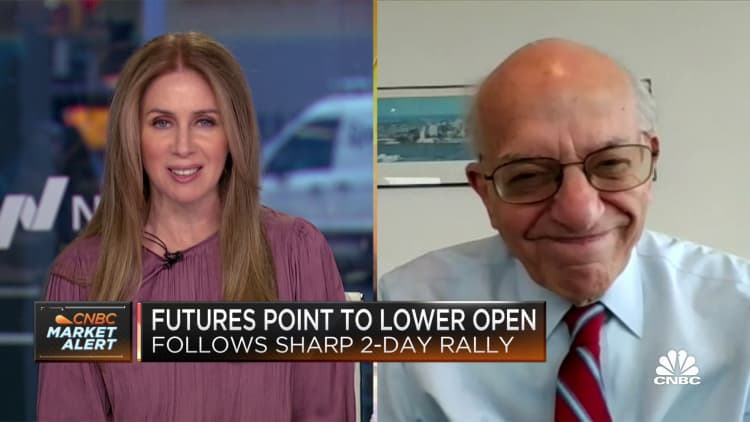
The U.S. labor market showed strength in September, with private companies adding more jobs than expected, payroll services firm ADP reported Wednesday.
Businesses added 208,000 for the month, better than the 200,000 Dow Jones estimate and ahead of the upwardly revised 185,000 in August.
Those gains came even as goods-producing industries reported a loss of 29,000 positions, with manufacturing down 13,000 and natural resources and mining losing 16,000.
However, a big jump in trade, transportation and utilities helped offset those losses, as the sector saw a jobs gain of 147,000.
Professional and business services added 57,000, while education and health services picked up 38,000 and leisure and hospitality grew by 31,000. There also were losers within the services sector, as information declined by 19,000 and financial activities saw a loss of 16,000 positions.
By size, companies employing 50-499 workers led with a 90,000 gain, while large firms added 60,000 and small businesses contributed 58,000.

The tight job market saw another month of sizeable pay hikes, with annual pay trending up 7.8% from a year ago, according to ADP, which compiles the report in tandem with the Stanford Digital Economy Lab. Those changing jobs saw a median change in annual pay of 15.7%, down from 16.2% in August for the biggest monthly drop in the three years ADP has been tracking the data.
ADP’s report comes two days before the closely watched nonfarm payrolls report issued by the Bureau of Labor Statistics.
The estimate for the Friday report is growth of 275,000 jobs. Though ADP revised its methodology over the summer, the August total, which was revised up sharply from the originally reported 132,000, was still well shy of the BLS count of 315,000 added jobs.
Federal Reserve officials are watching the jobs numbers closely as the central bank looks to stem high inflation.
In other economic news Wednesday, the U.S. trade deficit fell again, declining to $67.4 billion in August, its lowest level since May 2021.
Also, the ISM services index edged lower to 56.7% but still represented expansion in the sector. The reading was better than the 56% estimate.

